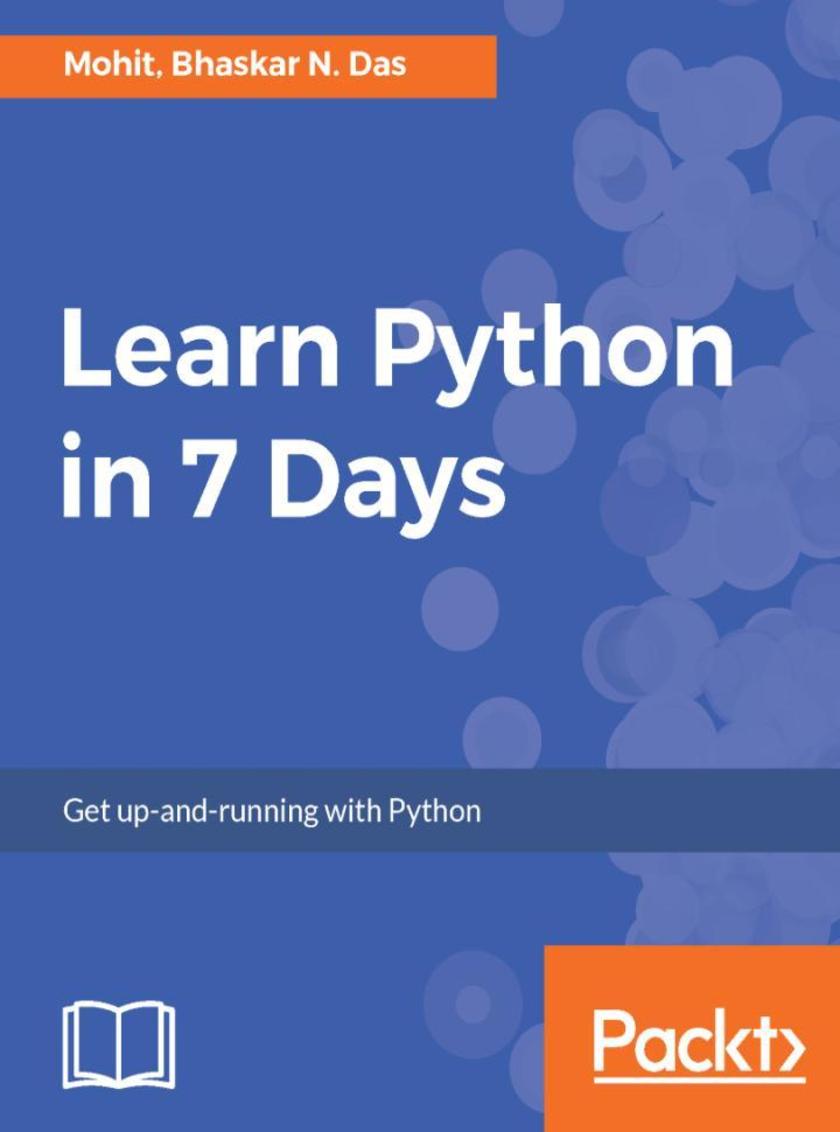
Learn Python in 7 Days
¥71.93
Learn efficient Python coding within 7 days About This Book ? Make the best of Python features ? Learn the tinge of Python in 7 days ? Learn complex concepts using the most simple examples Who This Book Is For The book is aimed at aspiring developers and absolute novice who want to get started with the world of programming. We assume no knowledge of Python for this book. What You Will Learn ? Use if else statement with loops and how to break, skip the loop ? Get acquainted with python types and its operators ? Create modules and packages ? Learn slicing, indexing and string methods ? Explore advanced concepts like collections, class and objects ? Learn dictionary operation and methods ? Discover the scope and function of variables with arguments and return value In Detail Python is a great language to get started in the world of programming and application development. This book will help you to take your skills to the next level having a good knowledge of the fundamentals of Python. We begin with the absolute foundation, covering the basic syntax, type variables and operators. We'll then move on to concepts like statements, arrays, operators, string processing and I/O handling. You’ll be able to learn how to operate tuples and understand the functions and methods of lists. We’ll help you develop a deep understanding of list and tuples and learn python dictionary. As you progress through the book, you’ll learn about function parameters and how to use control statements with the loop. You’ll further learn how to create modules and packages, storing of data as well as handling errors. We later dive into advanced level concepts such as Python collections and how to use class, methods, objects in python. By the end of this book, you will be able to take your skills to the next level having a good knowledge of the fundamentals of Python. Style and approach Fast paced guide to get you up-to-speed with the language. Every chapter is followed by an exercise that focuses on building something with the language. The codes of the exercises can be found on the Packt website
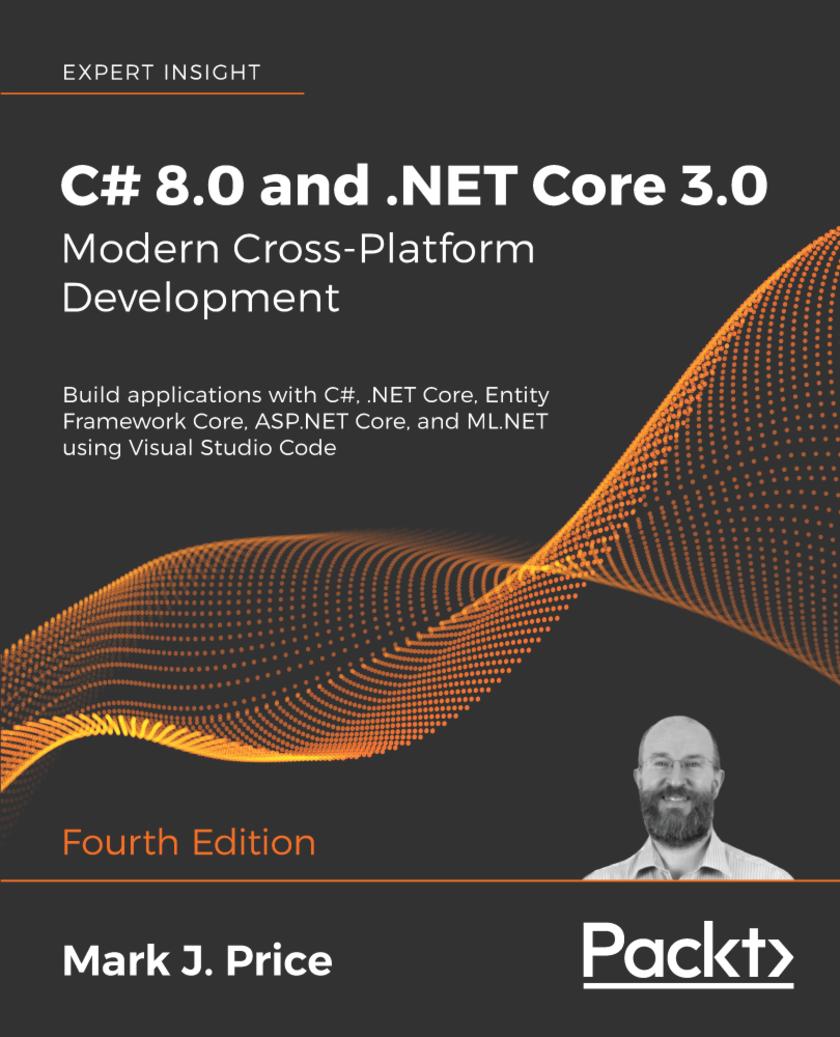
C# 8.0 and .NET Core 3.0 – Modern Cross-Platform Development
¥71.93
Learn the fundamentals, practical applications, and latest features of C# 8.0 and .NET Core 3.0 from expert teacher Mark J. Price. Key Features * Build modern, cross-platform applications with .NET Core 3.0 * Get up to speed with C#, and up to date with all the latest features of C# 8.0 * Start creating professional web applications with ASP.NET Core 3.0 Book Description In C# 8.0 and .NET Core 3.0 – Modern Cross-Platform Development, Fourth Edition, expert teacher Mark J. Price gives you everything you need to start programming C# applications. This latest edition uses the popular Visual Studio Code editor to work across all major operating systems. It is fully updated and expanded with new chapters on Content Management Systems (CMS) and machine learning with ML.NET. The book covers all the topics you need. Part 1 teaches the fundamentals of C#, including object-oriented programming, and new C# 8.0 features such as nullable reference types, simplified switch pattern matching, and default interface methods. Part 2 covers the .NET Standard APIs, such as managing and querying data, monitoring and improving performance, working with the filesystem, async streams, serialization, and encryption. Part 3 provides examples of cross-platform applications you can build and deploy, such as web apps using ASP.NET Core or mobile apps using Xamarin.Forms. The book introduces three technologies for building Windows desktop applications including Windows Forms, Windows Presentation Foundation (WPF), and Universal Windows Platform (UWP) apps, as well as web applications, web services, and mobile apps. What you will learn * Build cross-platform applications for Windows, macOS, Linux, iOS, and Android * Explore application development with C# 8.0 and .NET Core 3.0 * Explore ASP.NET Core 3.0 and create professional web applications * Learn object-oriented programming and C# multitasking * Query and manipulate data using LINQ * Use Entity Framework Core and work with relational databases * Discover Windows app development using the Universal Windows Platform and XAML * Build mobile applications for iOS and Android using Xamarin.Forms Who this book is for Readers with some prior programming experience or with a science, technology, engineering, or mathematics (STEM) background, who want to gain a solid foundation with C# 8.0 and .NET Core 3.0.
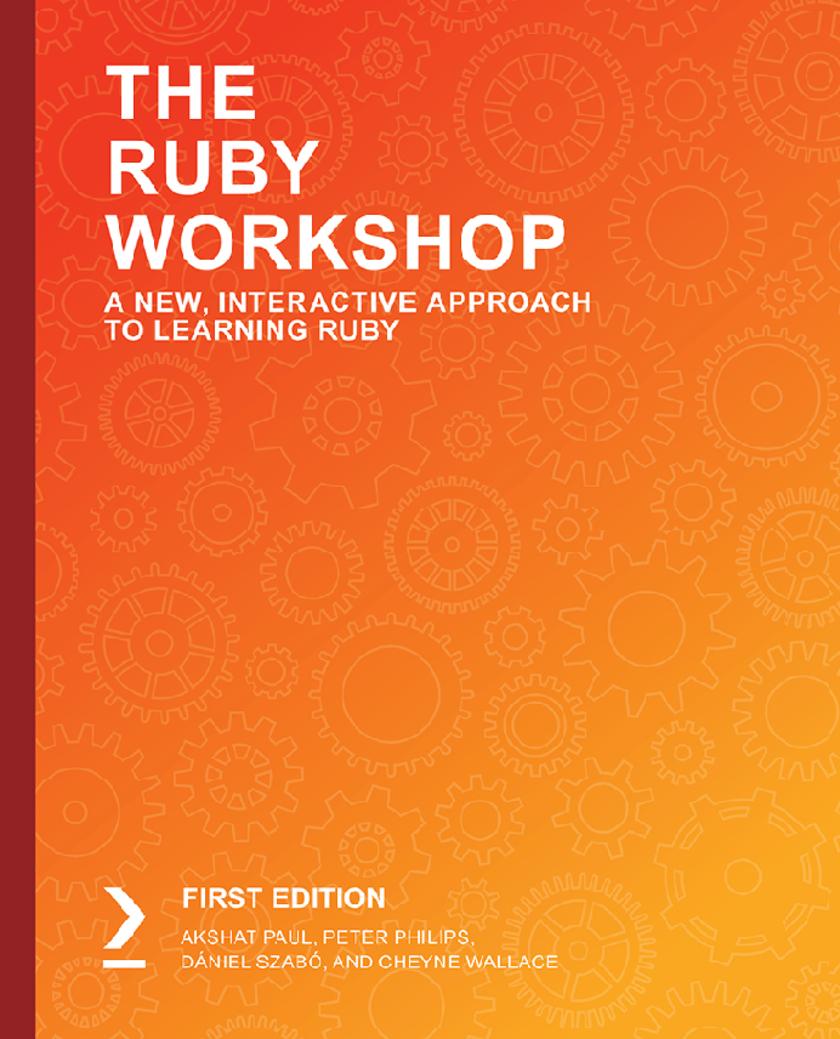
The Ruby Workshop
¥71.93
Cut through the noise and get real results with a step-by-step approach to learning Ruby programming. Key Features * Ideal for the Ruby beginner who is getting started with Ruby for the first time * A complete Ruby tutorial with exercises and activities that help build key skills * Structured to let you progress at your own pace, on your own terms * Use your physical copy to redeem free access to the online interactive edition Book Description You already know you want to learn Ruby, and the smarter way to learn Ruby 2.X is to learn by doing. The Ruby Workshop focuses on building up your practical skills so that you can kick-start your career as a developer and rapidly prototype applications. You'll learn from real examples that lead to real results. Throughout The Ruby Workshop, you'll take an engaging step-by-step approach to understanding the Ruby language. You won't have to sit through any unnecessary theory. If you're short on time you can jump into a single exercise each day or spend an entire weekend learning about metaprogramming. It's your choice. Learning on your terms, you'll build up and reinforce key skills in a way that feels rewarding. Every physical copy of The Ruby Workshop unlocks access to the interactive edition. With videos detailing all exercises and activities, you'll always have a guided solution. You can also benchmark yourself against assessments, track progress, and receive content updates. You'll even earn a secure credential that you can share and verify online upon completion. It's a premium learning experience that's included with your printed copy. To redeem, follow the instructions located at the start of your Ruby book. Fast-paced and direct, The Ruby Workshop is the ideal companion for Ruby beginners. You'll build and iterate on your Ruby code like a software developer, learning along the way. This process means that you'll find that your new skills stick, embedded as best practice. A solid foundation for the years ahead. What you will learn * Get to grips with the fundamentals of Ruby object-oriented programming * Understand common Ruby patterns to help minimize and easily maintain code * Explore ways to fetch, process, and output external data * Discover ways to work with public APIs and create reusable RubyGems * Keep your development process bug-free with various testing methods * Explore how to host applications on cloud application platforms like Heroku Who this book is for Our goal at Packt is to help you be successful, in whatever it is you choose to do. The Ruby Workshop is an ideal Ruby tutorial for the Ruby beginner who is just getting started. Pick up a Workshop today, and let Packt help you develop skills that stick with you for life.
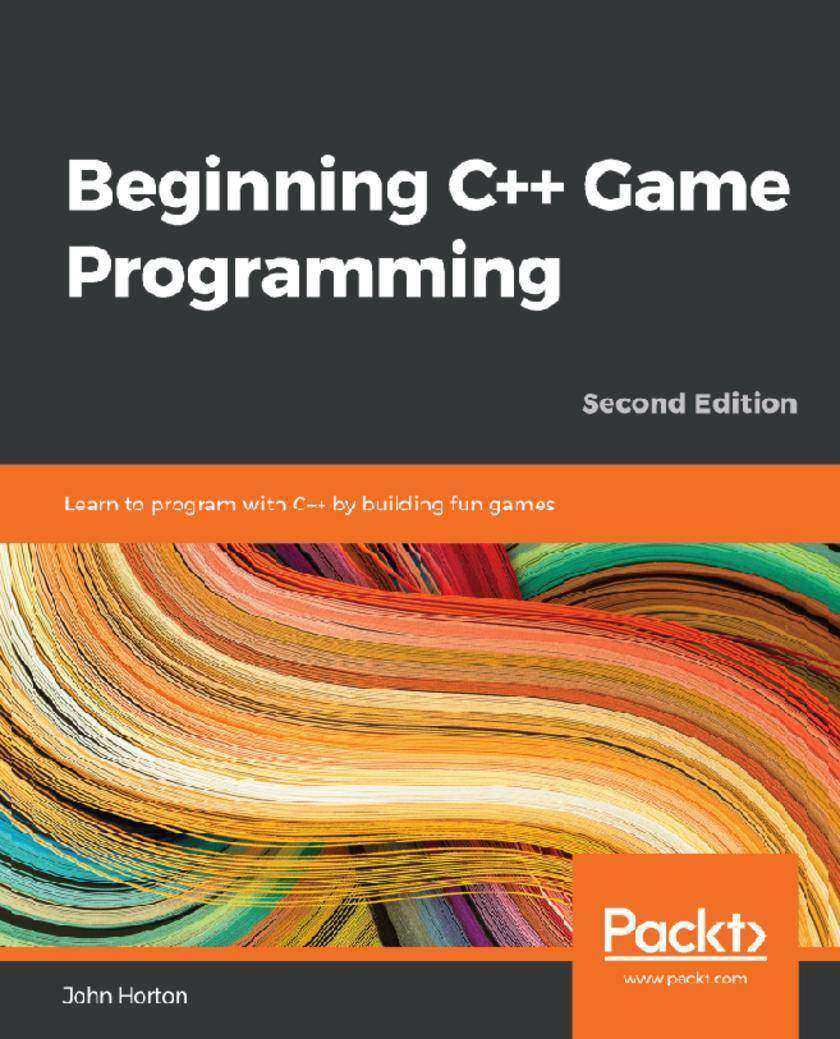
Beginning C++ Game Programming
¥71.93
Get to grips with programming techniques and game development using C++ libraries and Visual Studio 2019 Key Features * Learn game development and C++ with a fun, example-driven approach * Build clones of popular games such as Timberman, Zombie Survival Shooter, a co-op puzzle platformer, and Space Invaders * Discover tips to expand your finished games by thinking critically, technically, and creatively Book Description The second edition of Beginning C++ Game Programming is updated and improved to include the latest features of Visual Studio 2019, SFML, and modern C++ programming techniques. With this book, you’ll get a fun introduction to game programming by building five fully playable games of increasing complexity. You’ll learn to build clones of popular games such as Timberman, Pong, a Zombie survival shooter, a coop puzzle platformer and Space Invaders. The book starts by covering the basics of programming. You’ll study key C++ topics, such as object-oriented programming (OOP) and C++ pointers, and get acquainted with the Standard Template Library (STL). The book helps you learn about collision detection techniques and game physics by building a Pong game. As you build games, you’ll also learn exciting game programming concepts such as particle effects, directional sound (spatialization), OpenGL programmable shaders, spawning objects, and much more. Finally, you’ll explore game design patterns to enhance your C++ game programming skills. By the end of the book, you’ll have gained the knowledge you need to build your own games with exciting features from scratch What you will learn * Set up your game development project in Visual Studio 2019 and explore C++ libraries such as SFML * Explore C++ OOP by building a Pong game * Understand core game concepts such as game animation, game physics, collision detection, scorekeeping, and game sound * Use classes, inheritance, and references to spawn and control thousands of enemies and shoot rapid-fire machine guns * Add advanced features to your game using pointers, references, and the STL * Scale and reuse your game code by learning modern game programming design patterns Who this book is for This book is perfect for you if you have no C++ programming knowledge, you need a beginner-level refresher course, or you want to learn how to build games or just use games as an engaging way to learn C++. Whether you aspire to publish a game (perhaps on Steam) or just want to impress friends with your creations, you’ll find this book useful.
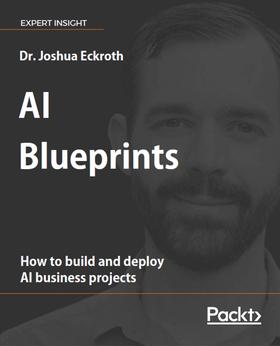
AI Blueprints
¥71.93
The essential blueprints and workflow you need to build successful AI business applications Key Features *Learn and master the essential blueprints to program AI for real-world business applications *Gain insights into how modern AI and machine learning solve core business challenges *Acquire practical techniques and a workflow that can build AI applications using state-of-the-art software libraries *Work with a practical, code-based strategy for creating successful AI solutions in your business Book Description AI Blueprints gives you a working framework and the techniques to build your own successful AI business applications. You’ll learn across six business scenarios how AI can solve critical challenges with state-of-the-art AI software libraries and a well thought out workflow. Along the way you’ll discover the practical techniques to build AI business applications from first design to full coding and deployment. The AI blueprints in this book solve key business scenarios. The first blueprint uses AI to find solutions for building plans for cloud computing that are on-time and under budget. The second blueprint involves an AI system that continuously monitors social media to gauge public feeling about a topic of interest - such as self-driving cars. You’ll learn how to approach AI business problems and apply blueprints that can ensure success. The next AI scenario shows you how to approach the problem of creating a recommendation engine and monitoring how those recommendations perform. The fourth blueprint shows you how to use deep learning to find your business logo in social media photos and assess how people interact with your products. Learn the practical techniques involved and how to apply these blueprints intelligently. The fifth blueprint is about how to best design a ‘trending now’ section on your website, much like the one we know from Twitter. The sixth blueprint shows how to create helpful chatbots so that an AI system can understand customers’ questions and answer them with relevant responses. This book continuously demonstrates a working framework and strategy for building AI business applications. Along the way, you’ll also learn how to prepare for future advances in AI. You’ll gain a workflow and a toolbox of patterns and techniques so that you can create your own smart code. What you will learn *An essential toolbox of blueprints and advanced techniques for building AI business applications *How to design and deploy AI applications that meet today’s business needs *A workflow from first design stages to practical code solutions in your next AI projects *Solutions for AI projects that involve social media analytics and recommendation engines *Practical projects and techniques for sentiment analysis and helpful chatbots *A blueprint for AI projects that recommend products based on customer purchasing habits *How to prepare yourself for the next decade of AI and machine learning advancements Who this book is for Programming AI Business Applications provides an introduction to AI with real-world examples. This book can be read and understood by programmers and students without requiring previous AI experience. The projects in this book make use of Java and Python and several popular and state-of-the-art opensource AI libraries.
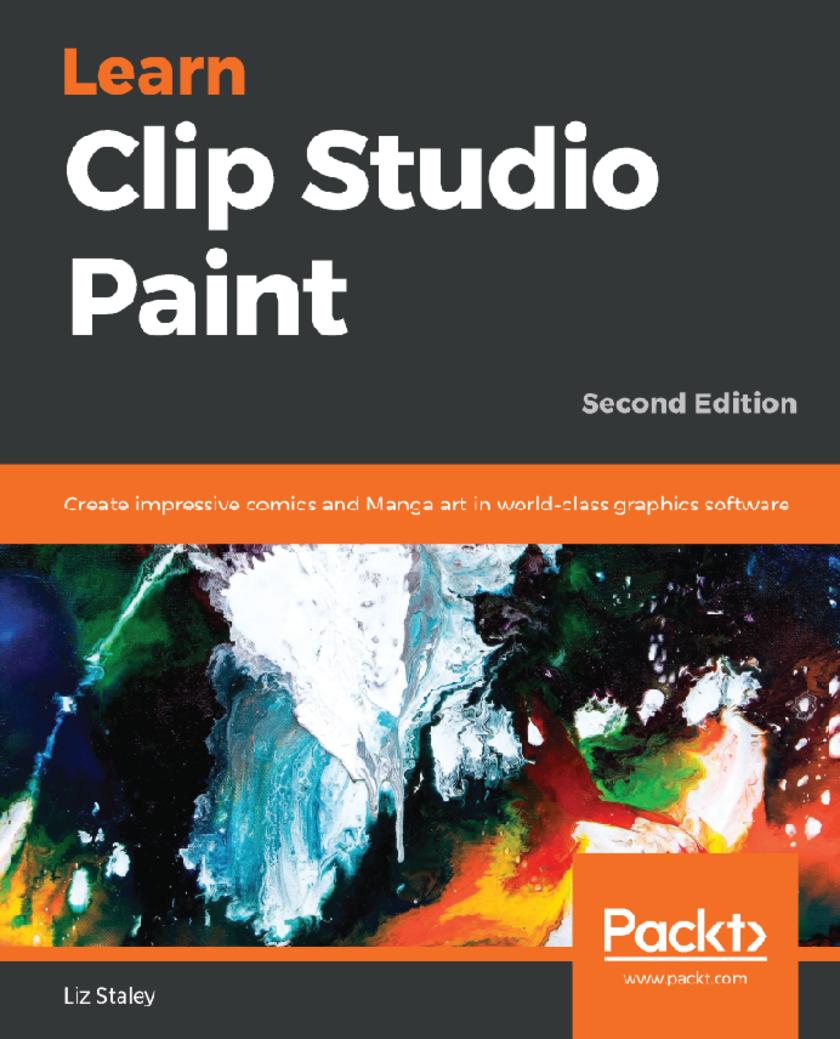
Learn Clip Studio Paint
¥71.93
Take your comics and illustrations to the next level with the powerful art tools in Clip Studio Paint 1.8 Key Features *Overcome “interface overwhelm” with a practical breakdown of the Clip Studio interface *Comprehensive guide on the Clip Studio Paint with detailed coverage of all the tools and concepts of designing comics *Streamline your workflow to create faster and easier using Clip Studio’s features Book Description Clip Studio Paint, the successor to Manga Studio, is used by over four million illustrators and comic creators around the world. This book will guide you through every step of learning this software, from system requirements and installation, all the way through to exporting your work for print or the web. Learn how to create new documents, customize tools to fit your working style, use ruler tools to create anything from straight lines to intricate backgrounds, add 3D elements, create comic panels using the specialized panel tools, utilize screentones and materials, add text and word balloons to your comics, create sound effects, easily flat and color your comics using reference layers, and bring your drawings to life using the animation features. By the end of this book, you will be able to navigate the Clip Studio Interface and program preferences, customize the various tools, and be able to create your own black-and-white and color illustrations and comics from start to finish. What you will learn *Understand the differences between Clip Studio Paint Pro and EX *Discover how to navigate and customize the user interface *Creating custom tools that fit your unique style of illustration *Using the ruler tools to create intricate perspective shots and complex symmetry *Discover how to use 3D elements in your work *Learn how to create lettering and word balloons to bring your comic stories to life *Understand the process of digital art creation from pencils to inks to color *Understand how to use the animation tools available in Clip Studio Paint Who this book is for If you are a beginning digital artist or are switching to Clip Studio from another graphics software, this book is for you. This book is excellent for those with no knowledge of digital art up to intermediate users looking to explore the unique features of Clip Studio Paint.

CompTIA Network+ Certification Guide
¥71.93
This is a practical certification guide covering all the exam topics in an easy-to-follow manner backed with self-assessment scenarios for better preparation. Key Features *A step-by-step guide to give you a clear understanding of the Network+ Certification *Learn about network architecture, protocols, security, and network troubleshooting *Confidently ace the N10-007 exam with the help of practice tests Book Description CompTIA certified professionals have always had the upper hand in the information technology industry. This book will be your ideal guide to efficiently passing and achieving this certification. Learn from industry experts and implement their practices to resolve complex IT issues. This book revolves around networking concepts where readers will learn topics like network architecture, security, network monitoring, and troubleshooting. This book will not only prepare the readers conceptually but will also help them pass the N10-007 exam. This guide will also provide practice exercise after every chapter where readers can ensure their concepts are clear. By the end of this book, readers will leverage this guide and the included practice questions to boost their confidence in appearing for the actual certificate. What you will learn *Explain the purpose of a variety of networking concepts and implement them appropriately *Understand physical security and common attacks while securing wired and wireless networks *Understand the fundamentals of IPv4 and IPv6 *Determine and explain the appropriate cabling, device, and storage technologies *Understand network troubleshooting methodology and appropriate tools to support connectivity and performance *Use best practices to manage the network, determine policies, and ensure business continuity Who this book is for This book is ideal for readers wanting to pass the CompTIA Network+ certificate. Rookie network engineers and system administrators interested in enhancing their networking skills would also benefit from this book. No Prior knowledge on networking would be needed.
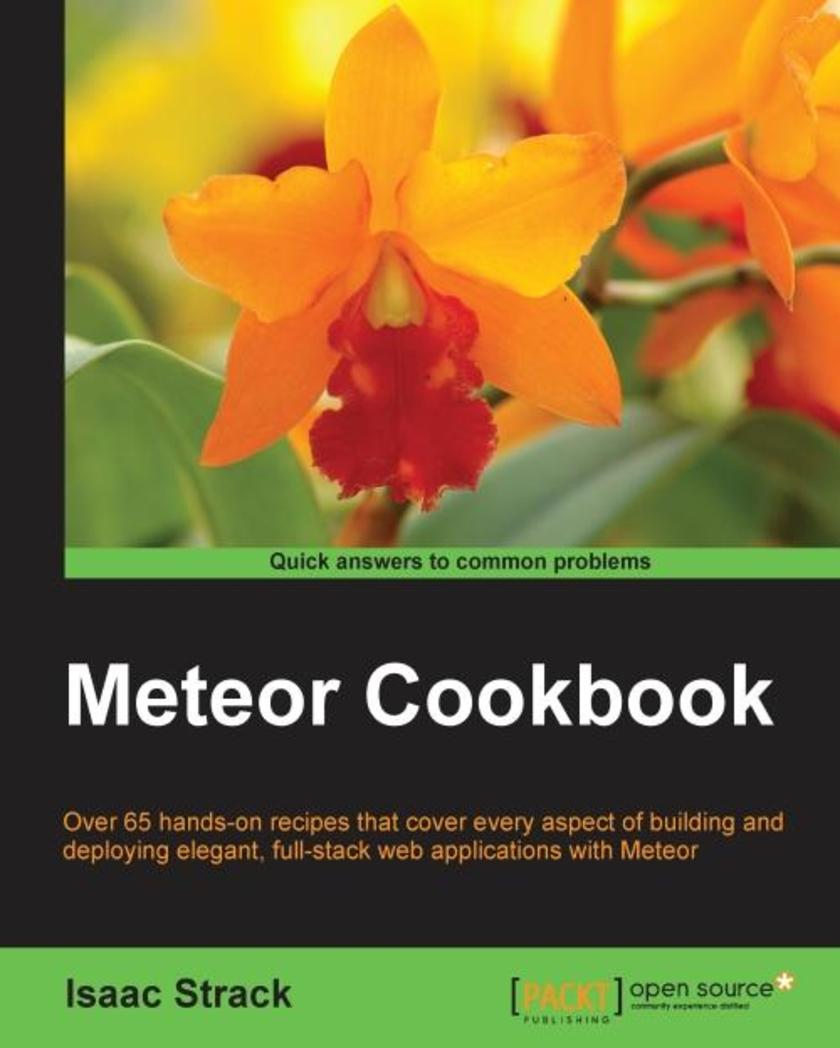
Meteor Cookbook
¥71.93
This book is meant for developers of all experience levels looking to create mobile and full-stack web applications in JavaScript. Many of the simple recipes can easily be followed by less-experienced developers, while some of the advanced recipes will require extensive knowledge of existing web, mobile, and server technologies. Any application or enterprise web developer looking to create full-stack JavaScript-based apps will benefit from the recipes and concepts covered in this book.

OpenCV 3.0 Computer Vision with Java
¥71.93
If you are a Java developer, student, researcher, or hobbyist wanting to create computer vision applications in Java then this book is for you. If you are an experienced C/C++ developer who is used to working with OpenCV, you will also find this book very useful for migrating your applications to Java. All you need is basic knowledge of Java, with no prior understanding of computer vision required, as this book will give you clear explanations and examples of the basics.
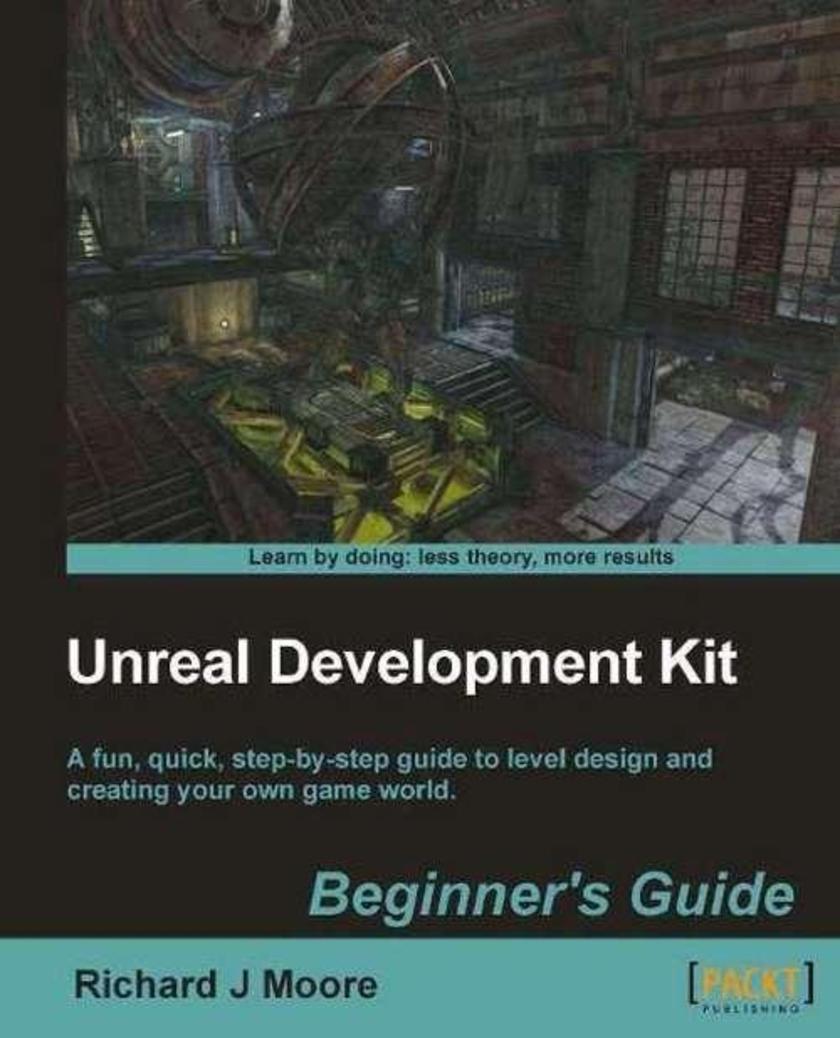
Unreal Development Kit 3: Beginners Guide
¥71.93
This beginner's guide focuses on getting you quickly through all the major learning points in a smooth, logical order. You'll also learn how to avoid some common pitfalls. Aspiring game developers who want to learn how to create their own levels, maps, game worlds and environments. You don’t need game design or game development experience and no experience of UDK is required

History Teaching with Moodle 2
¥71.93
Follow the creation of a History course with lots of practical examples and screenshots. Each chapter builds on the course and takes you through a different aspect of teaching history using Moodle. All exercises in the book relate to different periods of history and are suitable for all students of high-school age. This book is for history teachers who would like to enhance their lessons using Moodle. It doesn't matter if you haven't used Moodle before; as long as someone has set it up for you, you can get started with the exercises in the book straightaway.

Wordpress 3 Plugin Development Essentials
¥71.93
This book will provide an easy to understand, step-by-step approach to building your own WordPress plugins from scratch. We will construct a variety of plugins from the group up, demonstrating how to tap into a number of WordPress development aspects, as well as how to prepare and release your plugin(s) to the public. This book is for WordPress users who want to learn how to create their own plugins and for developers who are new to the WordPress platform. Basic knowledge of PHP and HTML is expected, as well as a functional knowledge of how WordPress works from a user standpoint.
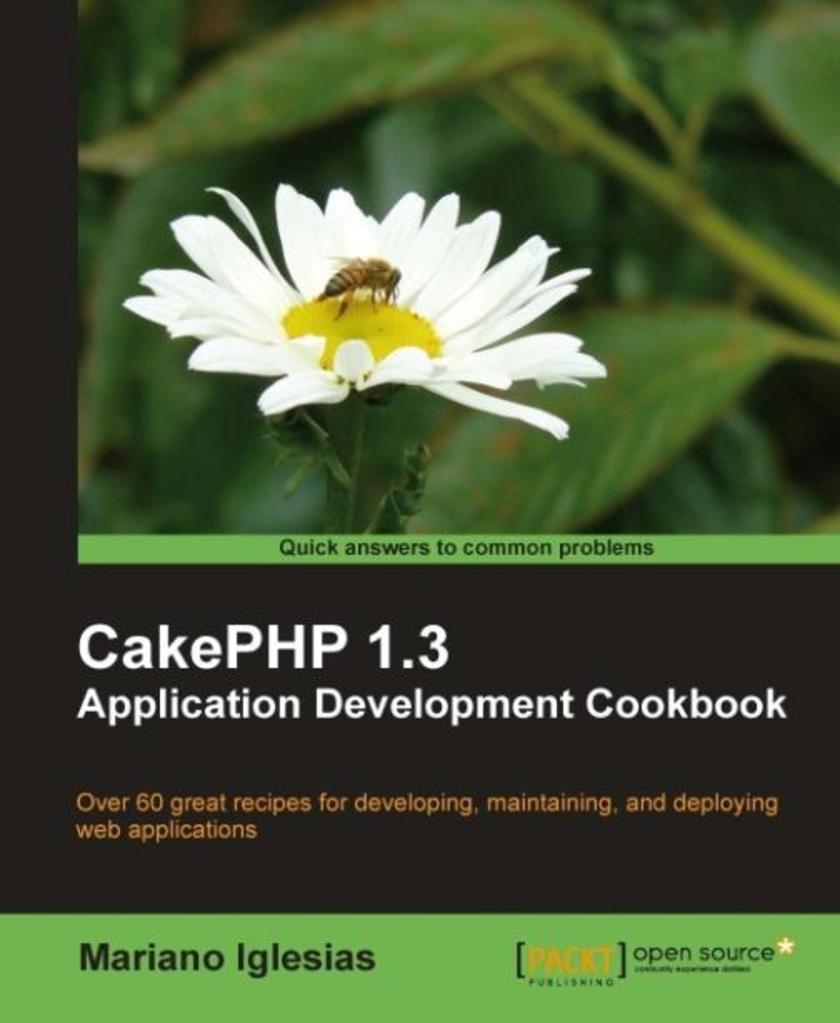
CakePHP 1.3 Application Development Cookbook
¥71.93
Written in cookbook style, this book offers learning and techniques through recipes. It contains step-by-step instructions for CakePHP developers to create unique web applications. The book is designed in such a way that you can refer to things chapter by chapter, and read them in no particular order.If you are a CakePHP developer who wants to discover quick and easy ways to improve web applications, and to leverage all aspects of the framework, this book is for you. This book assumes that you already have knowledge of CakePHP, and general PHP development skills.

Scribus 1.3.5 Beginners Guide
¥71.93
This book is a step by step guide packed with interesting examples and screenshots that cover lot of support options to help you achieve the superior quality documents. This books is divided into 11 chapters, each chapter dealing with a precise aspect of the software to help you have the best overview and make the best design choices for your document. This book is for people who want to create professional-looking documents with Scribus. If you want a great looking brochure, newsletter, or poster, this is the book for you. No experience of desktop publishing software is required – only creativity and enthusiasm for creating great documents!

Google Web Toolkit 2 Application Development Cookbook
¥71.93
The recipes in this book are in a straightforward and easy to follow format.The range of topics covered in this book will bring out the forward-thinking Java developer in you. If you want to build AJAX web applications with GWT then this book is for you. Developers with prior programming experience of Java development and object-oriented programming will find this book very useful.
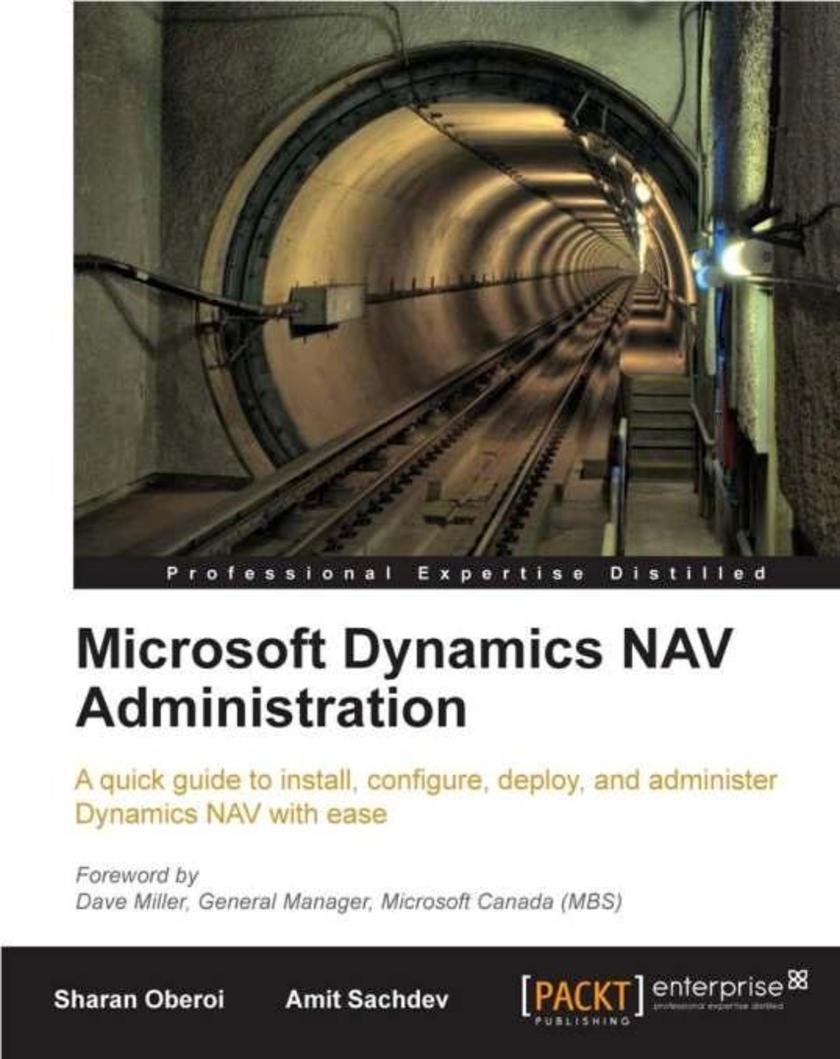
Microsoft Dynamics NAV Administration
¥71.93
This book is a tutorial guide that illustrates the steps needed to install, configure, deploy, and administer Dynamics NAV. It shows you how to get started with Dynamics NAV and then gradually explains other admin tasks such as backing up and performance tuning, using practical examples. If you want to get started in administering Dynamics NAV, this book is for you. Readers do not need any previous experience with Dynamics NAV.

Learning BeagleBone Python Programming
¥71.93
If you have experience with the Python language and are interested in getting started with electronics, then BeagleBone Black is the perfect platform for you and this book will provide you with the information you need.
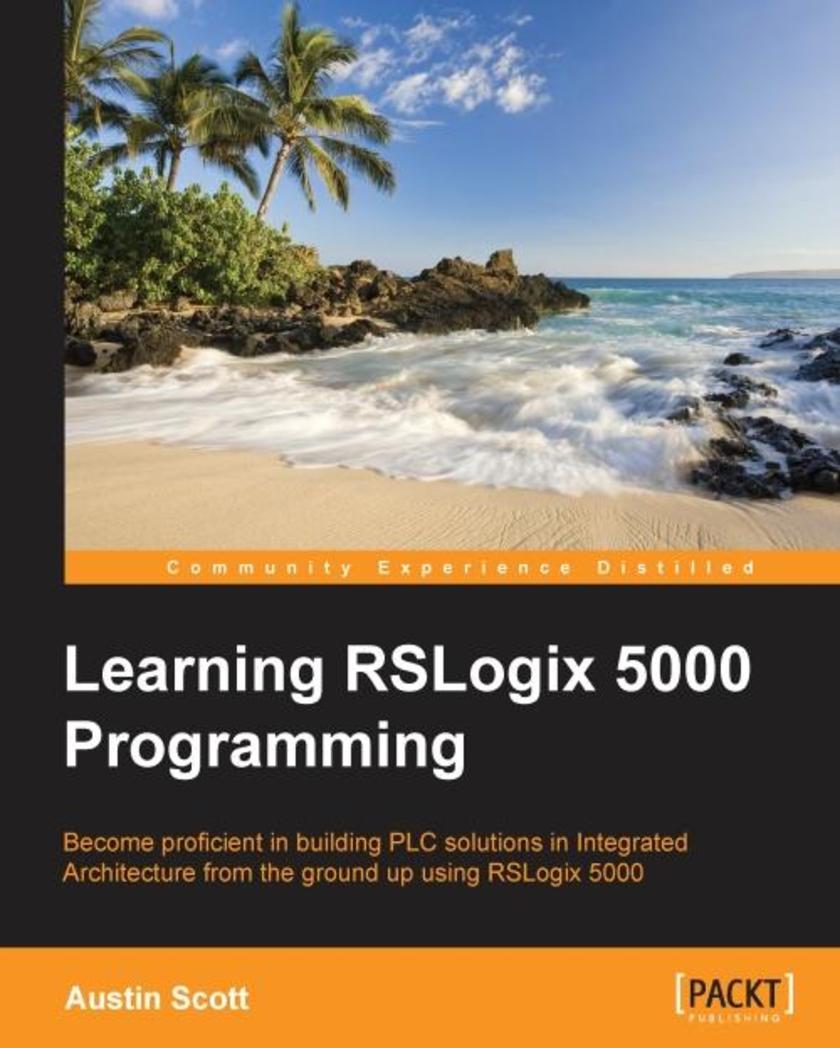
Learning RSLogix 5000 Programming
¥71.93
This book is for PLC programmers, electricians, instrumentation technicians, and automation professionals with basic PLC programming knowledge, but no knowledge of RSLogix 5000. If you are a student who is familiar with automation and would like to learn about RSLogix 5000 with a minimal investment of time, this is the book for you.

Joomla! 1.5 JavaScript jQuery
¥71.93
This book is a tutorial with step-by-step instructions, packed with practical code examples, images, advice, and ideas. If you are a PHP developer who is working with Joomla!, this book is for you. It is also aimed at web designers who want to add JavaScript elements, using jQuery, to their Joomla! sites, themes, modules, and other extensions. A basic knowledge of web development and Joomal! is required. Some knowledge of JavaScript would certainly be a bonus. No knowledge of jQuery is required.
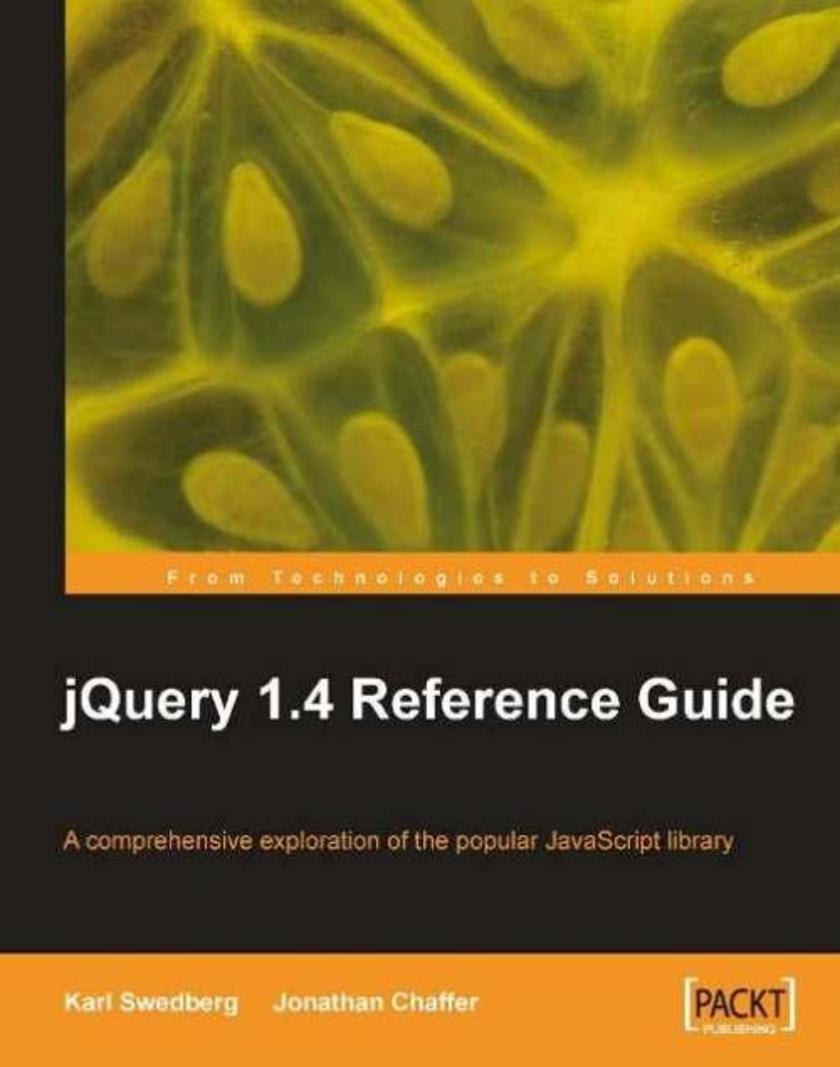
jQuery 1.4 Reference Guide
¥71.93
The book is a detailed reference guide, and an invaluable resource for answers to all your queries about jQuery. It is intended to be a quick reference to help at times when you need to quickly confirm a feature of the library This book is for you if you are a web developer who wants a broad, organized view of all that jQuery library has to offer or a quick reference on their desk to refer to for particular details. Basic knowledge of HTML and CSS is required. You should be comfortable with the syntax of JavaScript, but no knowledge of jQuery is assumed. This is a reference guide, not an introductory title and if you are looking to get started with jQuery (or JavaScript libraries in general) then you are looking for the companion title Learning jQuery 1.3.

Microsoft Office Live Small Business: Beginner’s Guide
¥71.93
A tutorial in the Beginner’s Guide series, offering the reader step-by-step instructions on building and customizing their MOLSB web site from scratch. This book is also packed with tips, tricks, and best practices. Small-business owners who want to build and customize their business web sites on Microsoft’s free-to-use platform. No technical knowledge is required.




 购物车
购物车 个人中心
个人中心



